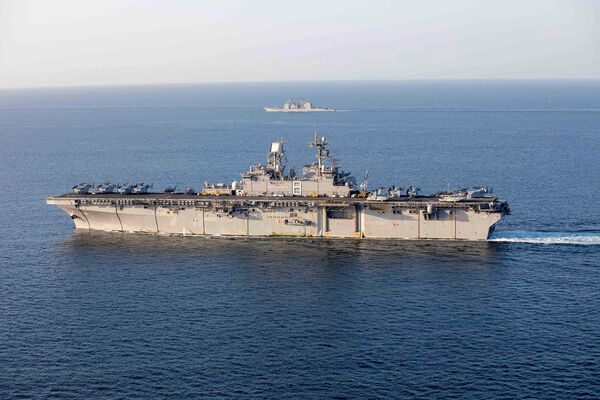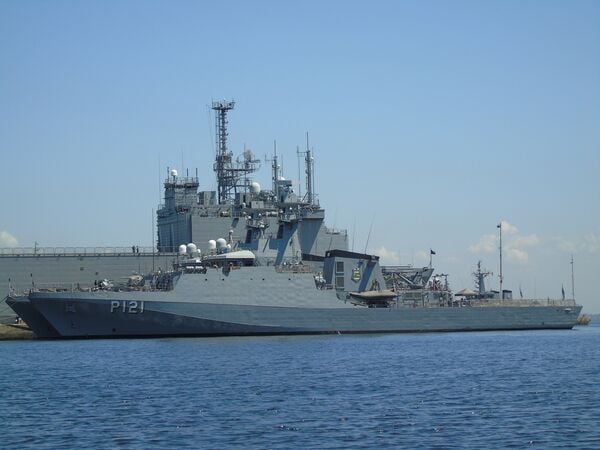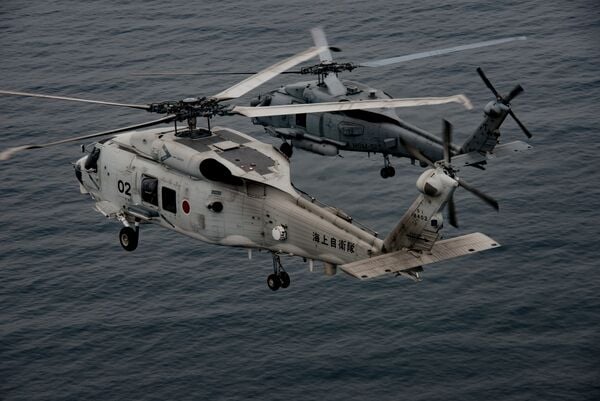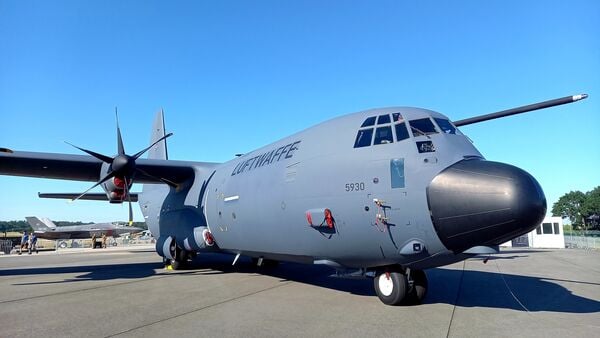- About
- Intara
- Capabilities
- Advisory
- Resources
- News
- Store
US Navy works with industry to explore alternative fuel sources
25 May 2022
by Michael Fabey


The US Navy cites the potential for hybrid power like that employed by the amphibious assault ship USS Makin Island. (US Navy)
The US Navy (USN) is working with industry to develop other potential sources of fuel as well as possible alternative modes of power, according to Meredith Berger, acting assistant secretary of the navy for energy, installations, and environment.
“We are working with industry on what other types of low-emissions fuel-energy types are out there,” Berger said on 23 May during a media roundtable discussion of the USN's “Climate Action 2030” plan, which was released on 24 May.
She described such work as being in the “survey stage” and noted the “driving element”, always, would be the impact on the USN and US Marine Corps (USMC) to “make mission”.
Berger also added that the USN was successful with hybrid-electric ship propulsion plant efforts, with vessels like Wasp-class amphibious assault ship USS Makin Island (LHD 8). “But there's also a lot of development to do in terms of technology.”
Brazil to update OPV radar systems
23 April 2024
by Victor Barreira


The Brazilian Navy wants to improve the radar capabilities of its OPVs. (Victor Barreira)
As part of an effort to update its Amazonas-class offshore patrol vessels (OPVs), the Brazilian Navy is acquiring a new air and surface search radar with identification friend-or-foe capability (IFF), according to the Navy Weapon Systems Directorate (Diretoria de Sistemas de Armas da Marinha: DSAM).
The Brazilian Naval Commission in Washington, DC, (Comissão Naval Brasileira em Washington: CNBW) on behalf of the DSAM has requested a request for information (RFI) and the price availability for up to three radars on 25 March.
The navy seeks to recover the combat capability of the OPVs by updating several of the ship's systems, the Navy Directorate-General for Material (Diretoria-Geral do Material da Marinha: DGMM) recently told Janes .
The modernisation of the OPVs will be carried out by the DSAM, the DGMM added, without detailing a schedule and the scale of the effort.
The DSAM is subordinated to the DGMM.
Japan loses two SH-60Ks in crash
22 April 2024
by Akhil Kadidal


The two Mitsubishi Heavy Industries (Sikorsky) SH-60Ks, which crashed on 20 April, were participating in an anti-submarine exercise with the JMSDF submarines and surface vessels, according to the service. In this representative 2016 photo, a JMSDF SH-60K Seahawk (in the front) operates with a US Navy MH-60R Seahawk. (US Navy/Mass Communication Specialist 3rd Class Matthew C Duncker)
Two Mitsubishi Heavy Industries (Sikorsky) SH-60K helicopters of the Japan Maritime Self-Defense Force (JMSDF) have crashed after they suffered a suspected mid-air collision during a night-time training exercise.
Japan Minister of Defense Minoru Kihara said the incident occurred between 2238 and 2304 h local time on 20 April, while the helicopters were conducting an anti-submarine drill with other JMSDF units. According to Kihara, three helicopters were participating in the drill, 150 n miles east of Torishima Island, in the Izu Islands chain.
“Two of the helicopters were flying in close proximity to each other and we have determined that there is a high possibility that there was a collision,” Kihara said on 21 April.
Joint Franco-German C-130 unit receives final aircraft
22 April 2024
by Gareth Jennings


One of the six C-130s that Germany is contributing to the joint unit with France seen at ILA 2022 in Berlin. All 10 of the unit's aircraft are now located at Évreux-Fauville Air Base in northern France. (Janes/Gareth Jennings)
The joint Franco-German C-130 air transport squadron has received its final aircraft, with all 10 Lockheed Martin KC/C-130J tanker and transport aircraft now located at Évreux-Fauville Air Base in northern France.
With the French Air and Space Force (Armee de l'Air et de l'Espace: AAE) having already received its two KC-130J and two C-130J-30 aircraft, the Luftwaffe said on 19 April that its final KC-130J has now been flown into the same location to join its two previously delivered KC-130Js and three C-130J-30s.
The C-130 air transport has an unrestricted exchange of aircraft, aircrews, and maintainers, as well as technical and logistical support based on a common pool of spare parts and a common service support contract. “Ten aircraft, two nations, one association – there has never been anything like this in Europe,” the Bundeswehr earlier said.
The joint air transport squadron is scheduled to achieve full operating capability in 2024–25.
The US Navy (USN) is working with industry to develop other potential sources of fuel as well as pos...
Latest Podcasts
Iran Israel analysis
In this podcast Janes analysts discuss the Iranian attacks on Israel on the 14 April. They highlight the military systems used by Iran and the performance and impact of these on Israel. They also discuss the implications of this attack goi...
Listen nowJanes Case Studies
Using Janes Intara to build a common intelligence picture: Russian build up on the Ukrainian border
View Case StudyNews Categories
 Sea Details
Sea Details